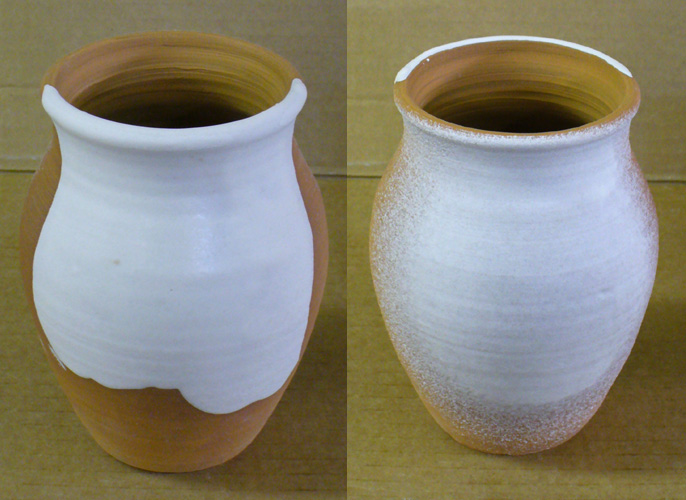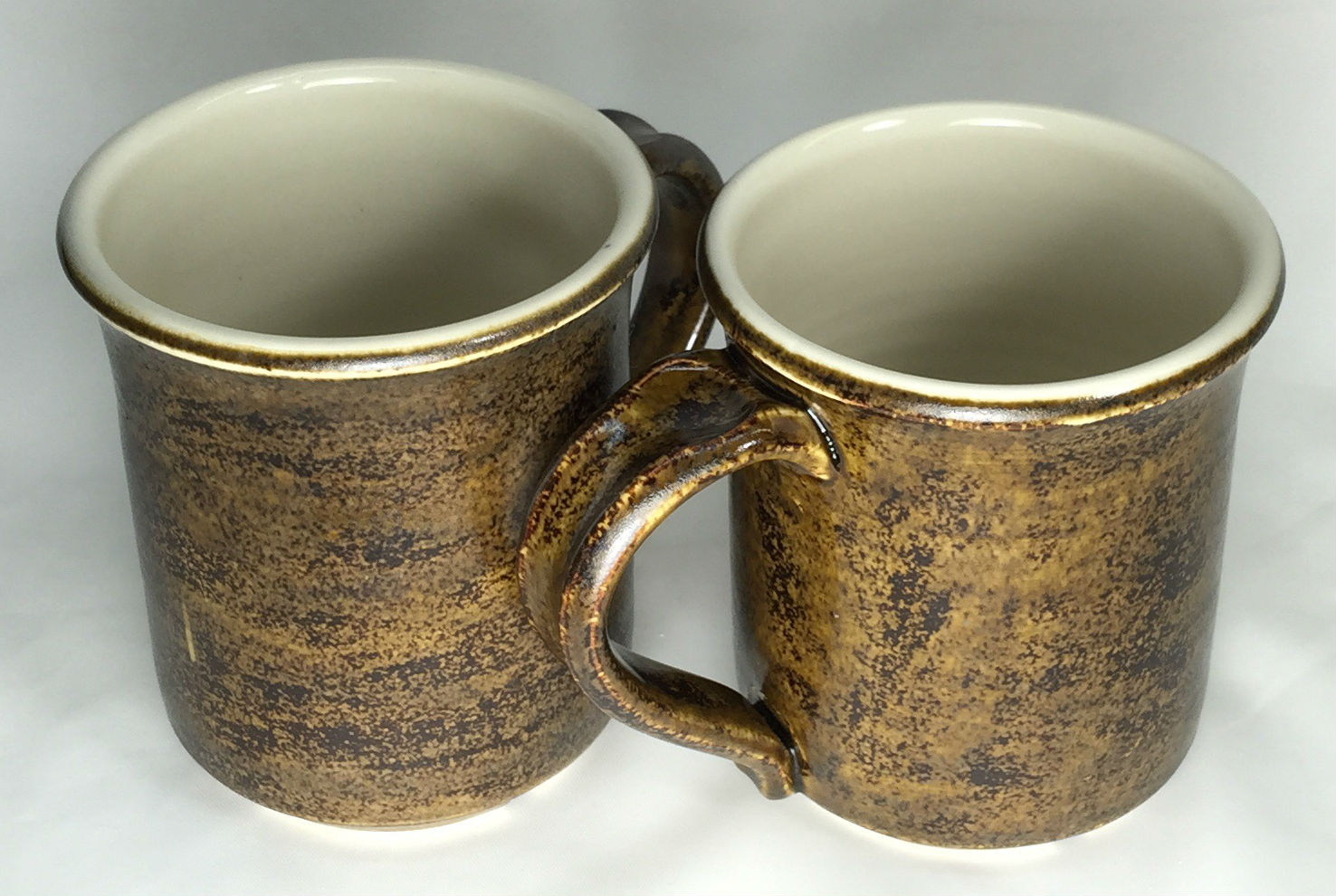| Monthly Tech-Tip | No tracking! No ads! | |
Pour Glazing
A method of applying glaze evenly and quickly to pottery.
Key phrases linking here: pour glazing, pour glazed, pour-glazed - Learn more
Details
In recent years hobby and even professional potters are been switching to buying bottled glazes and applying them by brush. They deem this worthwhile for the convenience and the greater variety of visuals achievable (as opposed to mixing one's own). However application by pouring is particularly advantageous for certain shapes of ware (e.g. bowl and vase exteriors, flatware), to apply cover glazes (e.g. flat colors, transparents, whites) or for frequently used recipes (e.g. rutile blues, stained base recipes).
Smaller functional ware is particularly well suited to this technique. Pieces can simply be pour-filled and dumped out to get an even coverage on the inside surface.
Related Information
Pour Glazing a Large Terra Cotta Vase
Much better than trying to paint to glaze on from little jars!
Liner Glazing a porcelain mug
The process of applying a liner glaze to the inside of a piece (by pouring), applying wax emulsion up the top inside and over the rim (using a turntable and brush), removing the glaze up the outside to mid-rim and finally dipping the rim and outside into the other glaze.
Applying an engobe by pouring or spraying

This picture has its own page with more detail, click here to see it.
An example of an engobe (slip) applied to dry ware and then fired at cone 2. The one of the left has been poured, the right sprayed. Control of the thickness of engobes is important, thus the specific gravity and viscosity of the slurries are very important. Engobes are invaluable since a red or brown burning body can be made to fire white like porcelain (enabling much better glaze surface quality).
Commercial glazes on decorative surfaces, your own on food surfaces

This picture has its own page with more detail, click here to see it.
These cone 6 porcelain mugs are hybrid. Three coats of a commercial glaze painted on the outside (Amaco PC-30) and my own liner glaze, G2926B, poured in and out on the inside. When commercial glazes (made by one company) fit a stoneware or porcelain (made by another company) it is by accident, neither company designed for the other! For inside food surfaces make or mix a liner glaze already proven to fit your clay body, one that sanity-checks well (as a dipping glaze or a brushing glaze). In your own recipes you can use quality materials that you know deliver no toxic compounds to the glass and that are proportioned to deliver a balanced chemistry. Read and watch our liner glazing step-by-step and liner glazing video for details on how to make glazes meet at the rim like this.
| By Tony Hansen Follow me on        |  |
Got a Question?
Buy me a coffee and we can talk

https://digitalfire.com, All Rights Reserved
Privacy Policy
